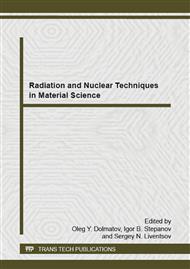p.506
p.511
p.515
p.519
p.523
p.527
p.532
p.536
p.540
Use of SPECT with 99mTc-Pyrophosphate Combined with a Perfusion Myocardium Scintigraphy in the Evaluation of Inflammatory Changes of the Heart in Patients with Persistent Atrial Fibrillation
Abstract:
The purpose was to study the utility of technetium 99m - pyrophosphate in the diagnoses of inflammatory changes of the heart in patients with persistent atrial fibrillation. The study included 30 patients (20 men and 10 women, mean age is 46 ± 9.92 years) with idiopathic persistent atrial fibrillation. To identify the foci of inflammatory changes in the myocardium the scintigraphy with 99mTc-Pyrphotech and myocardial perfusion scintigraphy with 99mTc-methoxy-isobutyl-isonitrile (99mTc-MIBI) was performed before the operation. Later, both scintigrams were combined. During the surgical intervention, in all patients an endomyocardial sampling for histological and immunohistochemical study was performed. Pathological accumulation of 99mTc-Pyrphotech in the myocardium was detected in 8 (26%) of examined patients. In 20% of cases the cause of "idiopathic" form of AF is latent lymphocytic or polymorphocellular myocarditis of viral etiology. Scintigraphy with 99mTc-Pyrphotech can serve as one of the primary methods for non-invasive diagnosis of myocardial inflammation at the given form of arrhythmia.
Info:
Periodical:
Pages:
523-526
Citation:
Online since:
January 2015
Price:
Сopyright:
© 2015 Trans Tech Publications Ltd. All Rights Reserved
Share:
Citation:


